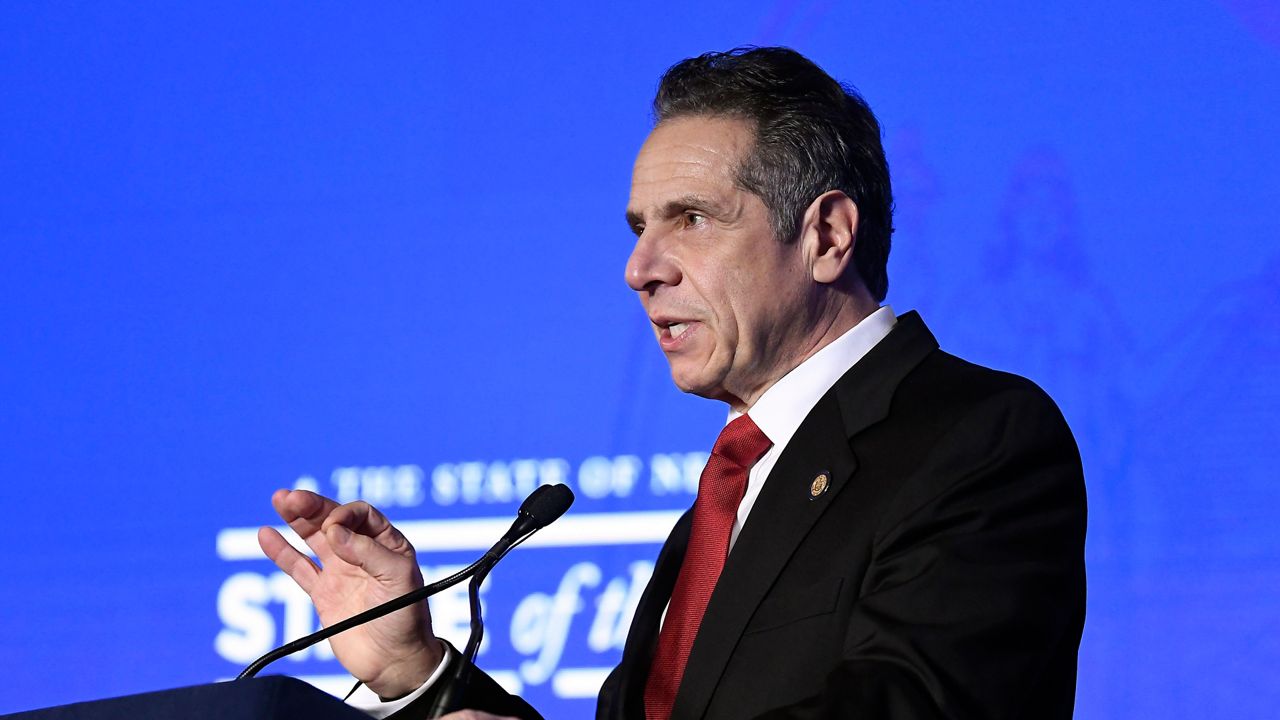Nearly a year ago, state lawmakers granted Gov. Andrew Cuomo sweeping oversight of the state's response to the COVID-19 pandemic, enabling him to issue executive orders that otherwise would have needed legislative approval.
Weeks later, Cuomo and lawmakers agreed to a state budget plan that enabled the executive branch to make spending adjustments and withhold money amid the financial uncertainty of the pandemic.
But now the power Cuomo has been given over the crisis is being questioned, and could be clawed back by the Legislature amid the growing controversy over the handling of nursing homes amid the COVID-19 pandemic.
Here's a question and answer on what the emergency powers enabled Cuomo to do, and why they are being questioned.
1. Why executive orders?
The March 3 law gives Cuomo broad authority over the pandemic. The measure allows him through executive order to temporarily suspend any law, regulation rule or local law that would impede the compliance of or prevent the necessary action to conduct pandemic response. It also allows him to issue orders to more affirmatively assist in the response.
This has allowed Cuomo to issue executive orders on a range of issues, including closures of businesses, to altering how elections are conducted in order to limit the spread of the virus. The orders must be renewed and updated every 30 days.
2. What has the governor used his executive power to do?
Executive orders allow the governor to act without calling the Legislature back to Albany to vote on specific issues. Take for instance the presidential primary last year. It was initially scheduled for April; a Cuomo executive order moved the primary to June 23 as a way of limiting exposure for voters.
All those yellow, orange, and red zone restrictions due to COVID-19 clusters and quaratine restrictions for travelers? Those were outlined through executive order, as well.
3. Can the Legislature override these orders?
Yes. Whenever lawmakers criticize Cuomo's orders, he or his office will often point to a key codicil in the original law: The Legislature can always overturn whatever order they don't like.
"The legislature may terminate by concurrent resolution executive orders issued under this section at any time," the March 3 law states.
So far, such a resolution has not been approved by the Democratic-controlled Legislature.
4. Why do lawmakers want to remove Cuomo's oversight of the pandemic now?
The COVID-19 pandemic is showing no signs of ending. A surge of COVID-19 cases has dropped off after the holiday season, but there are still more than 6,000 people hospitalized in the state. Variants of COVID-19, including those that have originated overseas in South Africa and the United Kingdom, are considered more contagious.
Vaccinations are reaching more people, but the process has been a slow one amid demand far outpacing supply.
But the governor's handling of nursing homes during the pandemic, the concern his office failed in releasing data on deaths of residents in nursing homes and other care facilities during the crisis, has fueled calls for the power to be scaled back.
Sen. Liz Krueger, the top Democrat on the Senate Finance Committee, called for the power to be reconsidered in the wake of Attorney General Letitia James's report that found New York may have undercounted the number of nursing home and long-term care facility residents who have died during the pandemic.
Then came The New York Post story last week, in which a top aide to the governor, Melissa DeRosa, acknowledged to lawmakers the administration withheld nursing home fatality data from them in order to first respond to a federal inquiry.
All this has built into calls for some sort of consequence for Cuomo. Assembly Minority Leader Will Barclay on Sunday called for the Legislature to reconvene as early as this week to end the authority.
"There is vocal, bipartisan support in both houses to finally end Gov. Cuomo’s emergency powers and restore the Legislature to a co-equal branch of government. Members of the Assembly and Senate Republican conferences have been calling for this for months," Barclay said. "It should not have taken a national scandal to compel Democrats to take this overdue step, but it has never been more obvious that the time has arrived."
5. What happens if the Legislature rescinds Cuomo's power?
Completely ending Cuomo's authority over the pandemic would likely mean an end to the kind of sweeping executive orders Cuomo has been issuing. It could also mean lawmakers will have to take a more active role in the pandemic, granting the governor authority to tighten or ease restrictions to prevent the spread of the virus.
Much of what happens in the coming weeks could also be tied to the state budget, due at the end of March. The governor's pandemic powers are due to expire at the end of April.



